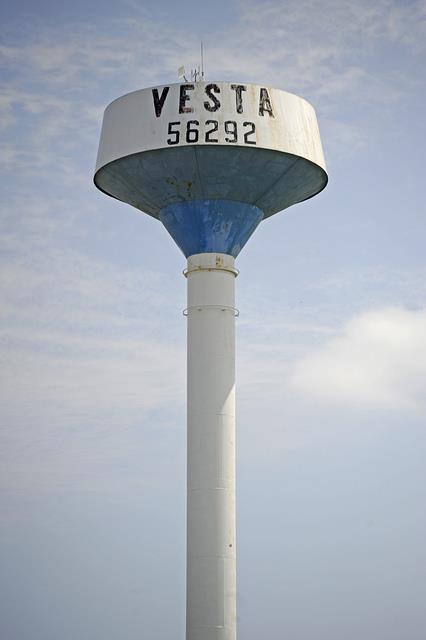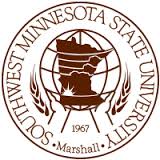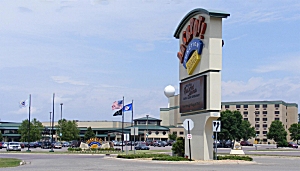|
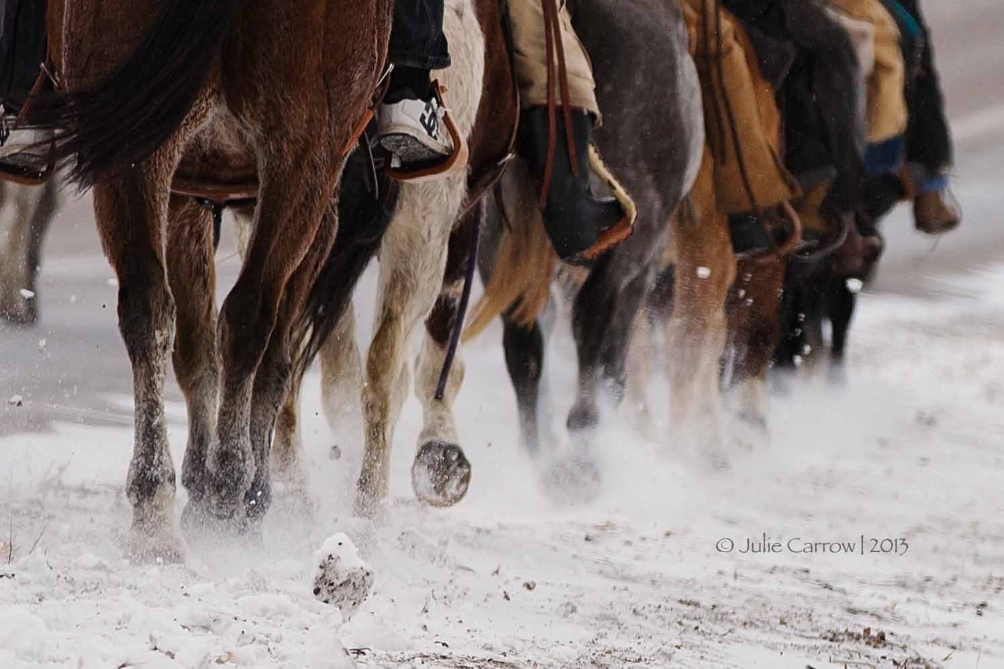
©
Julie Carrow - 2013
Communities
where the Ride will be Hosted
Page 2 - Minnesota
|
Thank you to all the Communities
along the way. You feed, water and shelter our faithful horses
and you house and feed us. You laugh with us and you cry with
us, and we with you. Without your support every year we could
not complete the Ride.
|
|
Pipestone
A Sacred
area for many Tribes around the States. The red pipestone also
known as Catlinite is mined by Natives only in the Quarries at
the National Monument. The stone is used to make the Sacred Pipes
or Canunpas that are smoked in ceremonies. The pieces left over
from a Pipe are not thrown away they are used to make small items
such as Turtles. No Catlinite is ever wasted, it is too precious,
spiritually, for that to ever happen.
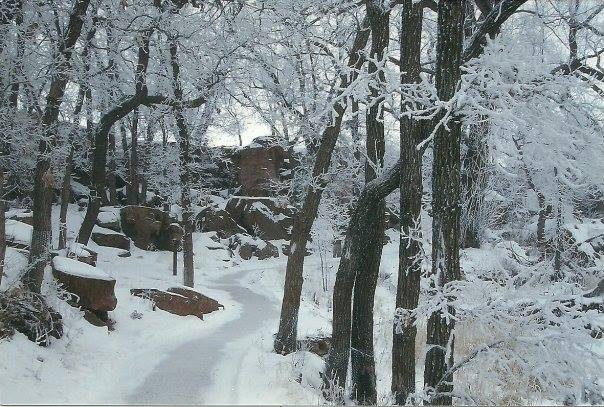
|
|
Winter
in the Pipestone National Monument. The trail looks magical
with the ice and snow.
Winter
Photo courtesy of Mylan Ray of Pipestone
Thanks Mylan
|

The
Three Maidens are of the Monument where many ceremonies
take place. This beautiful scene shows this sacred spot
through the Mists of Time.
Photo
couresy of Rave Rambow of Pipestone. Thanks Dave
|
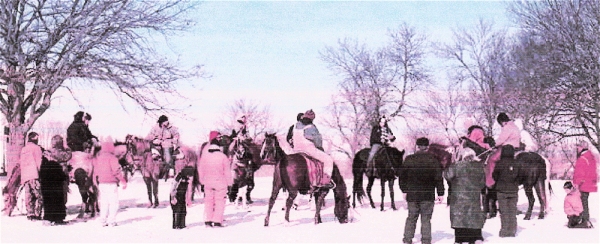 |
The Ride at the
Monument in 2010 (hey
that's me in the green coat!)
Photo
from Pipestone County Star newspaper.
|
|
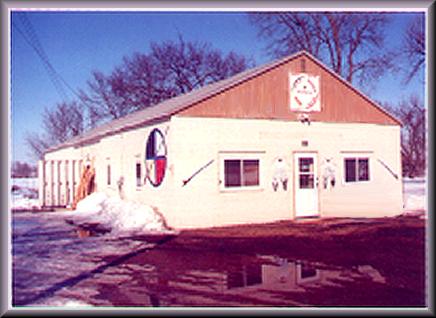
Little Feather
Indian Center.
317 4th Street North East, Pipestone, MN 56164
(Alice)
|
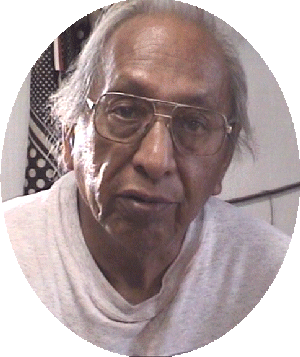
The Riders
will be hosted at the Little Feather Indian Center as it
has been since 2008. Alice Erickson (Dakota) and her group
of wonderful helpers have fed the Riders for an evening
meal and breakfast since then. Chuck Derby, (Running Elk),
her brother and my late husband, asked us before he passed
away in 2010 to continue hosting and helping the Ride and
we have. He loved the Ride, it's aims and it's healing power
and wanted to support it every year. We all do the work
in Chuck's name, in his memory.
|
|
|
Russell

Russell
in the 1920's
|
|
RUSSELL,
a city in section 19, Lyon County, founded in May 1888,
platted on January 19, 1889, and incorporated September
2, 1898, was named for Russell Spicer, son of a promoter
of the building of the branch railway. The post office,
begun in 1889, was first located in Ephraim Skyhawk's
store, his family for some time having been the only residents;
the store and an elevator and section house for the Willmar
and Sioux Falls Railroad were built in 1888.
Courtesy
Minnesota Historical Society
The
Redwood River flows through the city. Minnesota State
Highways 23 and 91 are two of the main routes in the community.
|
Russell City Hall
106 River Street
PO Box 357
Russell MN 56169
Phone: (507) 823-4366
Fax: (507) 823-4740
The Riders
will be staying at the Russell Community Center overnight.
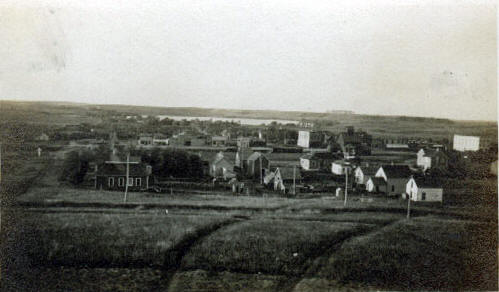
View of Russell
in 1910
|
|
Morton

|
You
will now be in the area where the 1862 History
took place. Morton is the town, but the Lower
Sioux Agency is the Dakota area. The Jackpot Junction
Casino is located here.
History
is found all around this area, it almost speaks
to you. If you can find the stone Warehouse that
is located on County Highway 2, that is the exact
place that the fighting started. Listen and see
if you can hear it. I have!
|
The Riders
will be staying either at the Community Center or Jackpot
Junction
There is usually
a Wacipi in the Community Center on the 21st December.
This is a rest day for the Riders.
Fort Ridgley
72404 County
Road 30
Fairfax, MN 55332
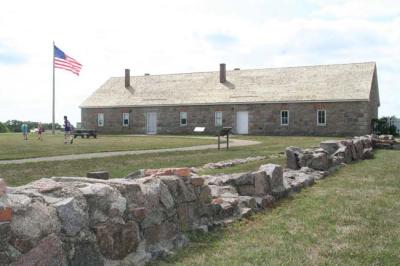
|
Built
in 1853 as a police station to keep peace as settlers
poured into the former Dakota lands, it withstood
several attacks in the U.S.-Dakota War of 1862
and became a training ground for Civil War recruits.
The
Riders will go back to Morton for the night.
|
MN
Historical Society site
|
|
|
Courtland
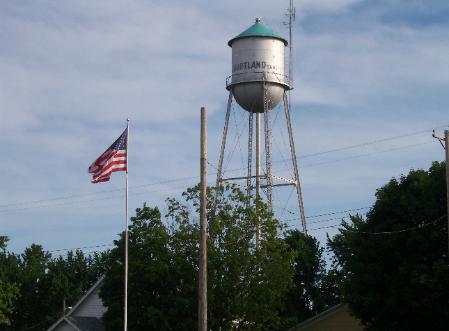
300 Railroad St.
Courtland, MN 56021
(507) 354-7055
First settlers were
Jacob Harmon, Mr. Haresine, John Sidel, Jacob Gfeller, and Ole
Nelson in 1855. Most of the early settlers came from Germany.
Hilo post office established in home of Wm. Duprey in 1856 he
was later appointed postmaster. In 1865 the township was renamed
Courtland.
The Riders will be
staying eith er in Jackpot Junction again or in the Courtland
Community Center over night.
Facebook
page
|
|
Mankato
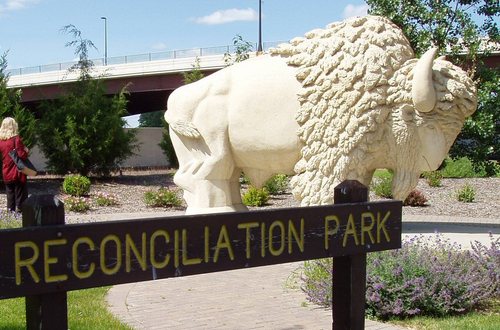
|
On
December 26th 1862 38 Dakota men were hung in Mankato
by the army. It was the largest hanging in American history.
Today
the Dakota people come to Mankato to honor the warriors
who were hung, they are their decendants, and their history
still pains them, The Dakota 38 + 2 Memorial Ride is healing
the wounds for many Dakota and Whites. Each year on December
26th at 10 am these Riders will be coming to Reconcilliation
Park, which is the hanging site, to remember and heal
|
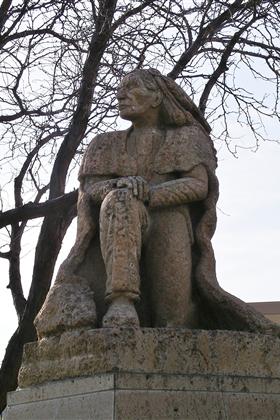 |
In 1980 the City
of Mankato presented the Dakota people with a park. In
1987, the 125th anniversary of the execution, Minnesota's
Governor declared a Year of Reconciliation. The City of
Mankato commissioned local artist Tom Miller to create
the statue 'Winter Warrior' that stands at the site of
the execution, next to the Mankato Public Library.
|
|
In 1992 the City
of Mankato purchased the site of the execution and named
it Reconciliation Park. People from the Mankato community
worked with Dakota people to raise funds for a statue
of a white buffalo at the park. People gather there every
December 26th, the anniversary of the execution, in prayer
and remembrance. (© http://peace.maripo.com/)
|
The Riders will be
staying at the Best Western in Mankato
Hanging
of 38
http://www.mankato-mn.gov/
|
|








